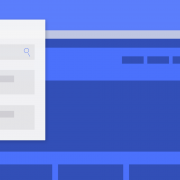How To Stream Video: A Beginner’s Guide
In the past, broadcasting live videos is a thing only available for TV stations and huge enterprises, but now streaming videos online has become an affordable and accessible avenue for anyone.
Just a few years back, streaming live video on the internet is still a relatively complex process, and not only the equipment required is still expensive, even hosting your videos on the internet used to be a very expensive task.
Nowadays, however, various affordable streaming solutions are available in the market, allowing online videos to grow exponentially in recent years, with live streaming making up an increasingly large portion of all online videos.
Although streaming live video nowadays is, as mentioned, pretty accessible, it can still be a daunting task for many people. This is why in this guide, we will explain every aspect of how to stream video online so you can do it right away.
Different Terms Related to Video Streaming
First, just so that we are on the same page, let’s take a quick refresher about important terms related to video streaming:
- Streaming: the term ‘streaming’ technically refers to the playback of any video that has been uploaded (stored) in a video hosting platform. So the video is stored first, and streamed only when requested by the viewer (i.e. the viewer pressed the ‘play’ button)
- Live streaming: in this type of streaming, the video is recorded, uploaded, and broadcasted simultaneously in real-time. A live streaming platform is required to do this.
- On-demand streaming: on-demand video streaming is when the viewer chooses the content they want to watch before it is streamed. When we watch something from Netflix or even YouTube, it is an on-demand streaming experience.
In this guide, we will mainly focus on how we can perform live streaming, and let’s first discuss the basic principles of how live streaming works.
How Does Live Streaming Work
Live streaming a video on the internet mainly involves four things:
- Video/audio source: the video source is typically a camera, and for the audio source this can be a microphone. However, other things like computer screens, mixer feeds, music files on a computer, can be your video/audio sources.
- Video encoder: an encoder converts (encodes) your video file from a continuous stream of images into a single, streamable video file. An encoder is what makes live streaming possible, ensuring reliable, low-latency streaming.
- Live streaming platform: a platform where your live-streamed video will become available. If you live-streamed on YouTube Live, for example, then YouTube is your streaming platform.
- Internet connection: pretty obvious, a reliable and fast enough internet connection is a must for live streaming
Preparing Your Live Streaming
1. Getting The Right Video and Audio Sources
Equipment plays a very important part in ensuring successful live streaming, and the audio/video sources are the most important aspects of live streaming equipment.
A simple stream may consist of just one video source (i.e. a single camera) and one audio source (one microphone), but a more complex streaming setup can involve many layers of video and audio sources.
Cameras are going to be the most common type of video source in live streaming, and nowadays we have many different options at various price points. You can technically use your smartphone’s camera (which also has a built-in microphone) as your main video source. There are affordable camcorders below $300, and there are also professional video cameras at above $10,000.
Similarly, microphones are typically the main audio source of a live stream, which is also available at different price ranges.
Our advice is to define a budget according to the objective of your live stream, and invest in the best possible video and audio sources depending on this budget.
2. Setting Up Your Audio/Video Sources
Now that you’ve decided on your audio and video sources, live streaming would mainly involve capturing the signal from both the audio and video sources before they are streamed to the viewers.
Your live streaming setup would mainly depend on whether you are using a software or hardware encoder. If you are using a software encoder (on PC/laptop), then you’d need to connect your video and audio sources to this computer, but you can’t simply connect a camera to a computer with HDMI for this to work, and you’ll need USB PTZ Cameras from HoneyOptics.
However, nowadays there are USB cameras and monitors designed for live streaming, and you can connect them directly to a computer without needing a capture card.
On the other hand, if you are using a hardware encoder, then most of them come with internal capture cards so you can connect your cameras and microphones to the encoder right away, before connecting the encoder to your PC.
3. Streaming Destination
As discussed, this is the platform where your live video can be viewed by your audience. Popular streaming destinations include YouTube, Facebook, Twitch, and Periscope, among others.
However, there are also advanced online TV solutions like Viloud that offer more versatility over where your live stream is presented (i.e. you can have your own app/website) and how you are going to monetize the live stream. With Viloud, you can also stream simultaneously to these popular platforms (i.e. YouTube Live and Facebook Live together) and on your own platform/website.
The most important factor to consider when choosing between different streaming destinations is your audience, especially which platform your ideal audience is frequenting.
How To Live Stream: Basic Steps
Now that you’ve properly set up your live streaming kit, here we will guide you through starting your first live streaming session.
Although the actual process might vary depending on your setup and/or streaming destination of your choice, here is the basic workflow of starting your live streaming:
Step 1: setting up your audio/video sources and the encoder
We have briefly discussed how your setup might vary depending on whether you are using software or hardware encoder. Use a capture card if you are using a software encoder and you are not using a USB mic/camera.
Make sure everything has power and check your internet connection before you start the live streaming.
Step 2: configuring your encoder
This step will also vary depending on whether you are using a hardware or software encoder, and the brand of the encoder. However, all encoders should allow you to configure the essential settings for streaming:
- Resolution: the video resolution/quality of your stream. 1280×720 pixels is the standard HD resolution, also known as 720p, but for many people 1080p (1920×1080) and even 4K (3840 x 2160) are increasingly becoming the new standards.
- Bitrate: bitrate refers to how much data is being uploaded to the streaming platform every second, measured in Kbps (kilobits per second) or Mbps (1000 kilobits per second) and Gbps (1 million kilobits per second). The higher the bitrate, the better your video streaming quality will be, but it will also require higher bandwidth.
- Framerate: how many frames are displayed per second in your stream. The higher, the smoother, but again it will also require more bandwidth and CPU/GPU power. 30 fps is considered pretty decent, but more people are now demanding 60 fps as the standard.
If you are unsure, start with 720p resolution, 30fps frame rate, and 3 Mpbs (3,000 Kbps) bitrate.
Step 3: setting up a streaming destination
This one is fairly simple, you can go to the live streaming platform of your choice and set up a new live stream. On Viloud, you can simply start a new live streaming event on your channel, set up the privacy settings, and you are good to go.
Step 4: connect your streaming destination and your encoder
Your streaming platform will need to connect and verify the data coming from the encoder, while on the other hand, the encoder needs to know where it’s required to send the data.
This is mainly done by copying and pasting a special code called stream key provided by the streaming platform to the encoder. You will also need to do the same with the stream URL, also provided by the streaming platform.
Once you’ve done this, your encoder and streaming platform should be able to work together without issues.
Conclusion
While live streaming is certainly a very broad topic to discuss and each streaming setup might require a different approach, above we have discussed the most important basics on how you can start your live streaming video immediately. Using an advanced video hosting and streaming platform like Viloud can make your live streaming process even easier than ever, and understanding these basics can help you in successfully starting a live streaming channel in no time.
















